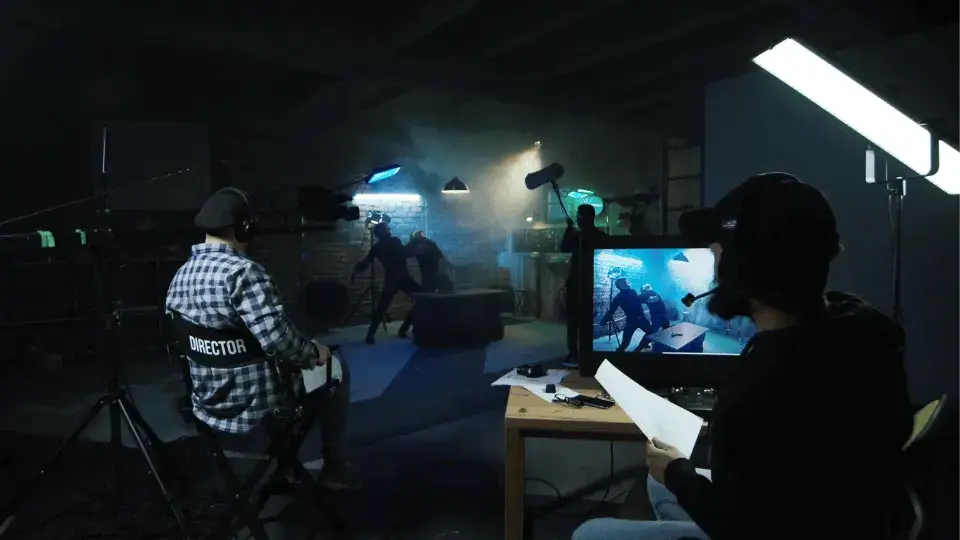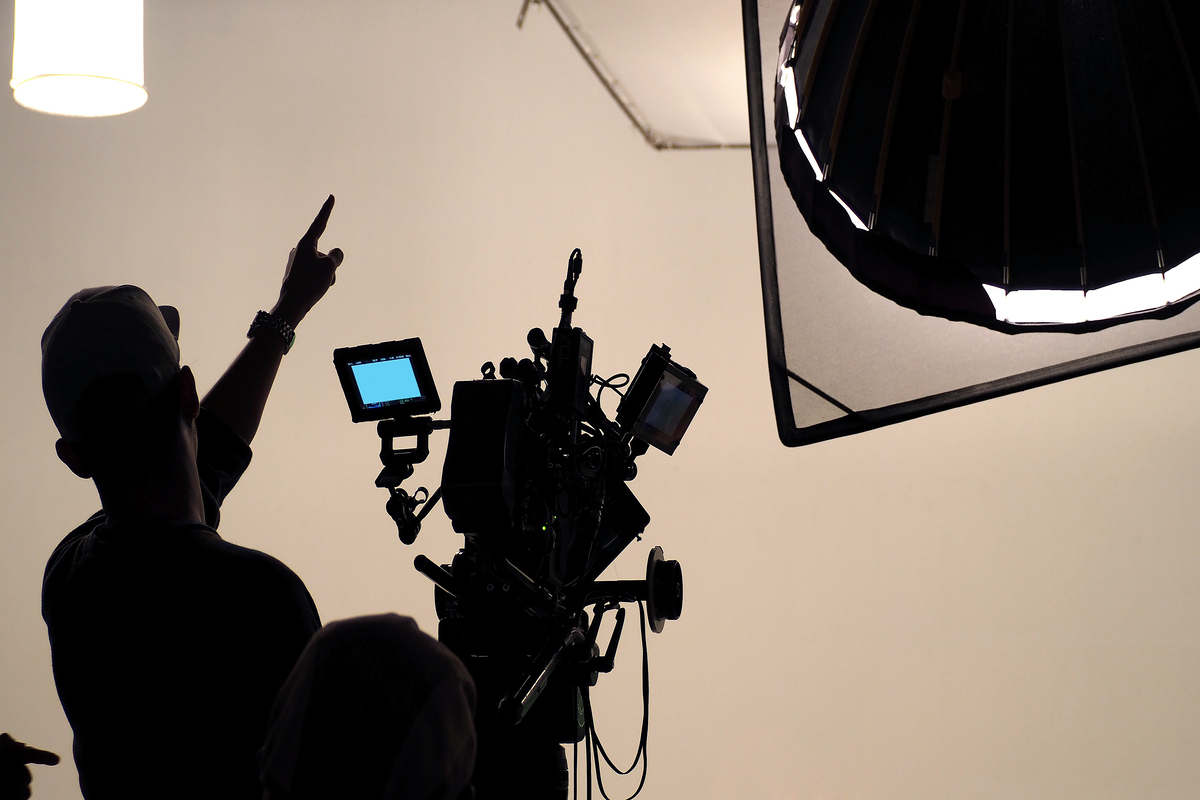Stepping into the vast expanse of filmmaking can often feel like preparing to cross a sprawling ocean of creativity, technical mastery, and narrative nuances. Each wave that comes your way unravels a new aspect, a fresh perspective, a hidden gem of knowledge that adds to the magnificence of this ever-evolving art form. Yet, at the heart of it all lies the thrill of unearthing compelling narratives, crafting them into riveting visuals, and capturing the hearts of audiences in a bond that endures beyond the passage of time.
Drawing from the hallowed halls of New York University’s acclaimed cinematic arts tradition, we’ve distilled the multi-faceted essence of filmmaking into eight cohesive steps. Each step, a valuable cornerstone, builds upon the other, helping you construct a sturdy foundation for your cinematic journey. So, fasten your seatbelts and let your spirit of adventure take the reins, as we navigate through this labyrinth, picking up essential skills, insider secrets, and a profound understanding of the art and science of filmmaking.
As we embark on this journey together, you’ll gain the tools and insights needed to transform your unique visions into mesmerizing films. So, without further ado, let’s delve into the rich tapestry of filmmaking and unravel its complexities, one step at a time.
Conceiving Your Story
The nucleus of every captivating film is a compelling narrative. This story forms the crux of your film, fostering the emotional connection that audiences crave. It’s here where your initial inklings transform into a comprehensive narrative structure. Brainstorm ideas and let your imagination run wild, because every epic tale starts with a simple thought.
Yet, a great idea isn’t enough. You need to refine your raw concept into a structured story. Use techniques such as the three-act structure or the hero’s journey to provide a satisfying narrative progression. Remember, your script is the blueprint for your film. Craft it diligently, for it will guide your entire filmmaking journey.
Planning and Pre-production
Once your story is set, the pre-production phase commences. This is where you prepare for the actual shooting of your film. You’re essentially laying down the groundwork – scripting, storyboarding, casting, scouting locations, and budgeting. The more meticulously you plan, the smoother your production phase will be.
The importance of casting cannot be overstated. Finding the right actors to bring your characters to life is vital. Equally essential is the scouting of locations, which must complement your narrative and enhance your visual storytelling. And, while the romance of filmmaking might draw you in, remember to keep an eye on the budget. Realistic budgeting is a cornerstone of successful filmmaking.
Cinematography: The Magic of the Lens
Cinematography is the lifeblood of a film. It’s the cinematic voice that narrates your story through visuals. A profound understanding of camera angles, lighting, and shot compositions is imperative. Whether you’re establishing the grandeur of a landscape with a wide shot or the intensity of a character’s emotion with a close-up, every shot tells a part of your story.
However, cinematography isn’t merely about capturing images. It’s about manipulating light and shadows to create a specific mood or atmosphere. Delve into the fascinating realm of lighting techniques. Play with hard and soft light, explore the chiaroscuro effect. Remember, in filmmaking, your camera is your paintbrush, and the world is your canvas.
Sound Design: An Unseen Character
While images captivate the eye, it’s often the sound that truly immerses viewers in the world of your film. Sound design is a potent storytelling tool, often overlooked by novices. It consists of dialogue, ambient sounds, sound effects, and the film score, each contributing to the film’s emotional resonance.
Dialogue, of course, drives the narrative. However, the power of ambient sounds and sound effects in creating a sense of place and time is inimitable. Meanwhile, a film’s score adds an emotional layer, subtly guiding the audience’s reactions to the narrative. Sound design, when done right, is an invisible character that enriches the cinematic experience.
The Art of Directing
Being a film director is more than just calling ‘action’ and ‘cut’. It’s about interpreting the script and guiding the cast and crew to bring that vision to life. You’re the captain of the ship, steering the creative process from beginning to end. It requires leadership, vision, and an intimate understanding of storytelling.
A director must also possess the ability to communicate effectively. You’ll be working with a plethora of personalities and departments, each integral to the filmmaking process. Thus, cultivating your people skills is just as essential as honing your creative abilities. Remember, a director orchestrates the symphony that is a film. Your baton guides every note.
Editing: Crafting the Final Narrative
In the editing room, the film truly comes alive. Footage is transformed into a cohesive narrative, trimmed and arranged for maximum impact. Editing dictates the pace and rhythm of the film, often described as the “invisible art” due to its subliminal influence on the audience’s viewing experience.
But editing isn’t just about cutting and assembling footage. It’s where you make crucial decisions about what to show, what to hide, and when to reveal. Often, the story evolves in the editing room. As the adage goes, a film is made three times: when it’s written, when it’s shot, and when it’s edited.
Color Grading: Painting with Light
Color grading is the process of altering and enhancing the color of a film. It sets the mood, directs the audience’s attention, and even adds depth to the narrative. It’s an essential step in post-production, transforming the visuals into the mesmerizing images that captivate viewers.
The magic lies in the subtleties of color grading. From the cool blues of a suspense thriller to the warm hues of a romance, color grading significantly contributes to the film’s overall aesthetic and emotional resonance. Hence, grasp the nuances of this craft. Every shade you add paints an additional layer to your story.
Distribution: Sharing Your Vision
After all the hard work, it’s time to share your creation with the world. Whether you choose a film festival route or online platforms, effective distribution strategies ensure your film reaches the right audience. Familiarize yourself with various platforms and submission guidelines, and remember to prepare an engaging trailer and promotional materials.
Marketing might not be the first thing on your mind when you think of filmmaking, but it’s undeniably an essential part of the process. After all, what good is a story if it’s not shared and appreciated? So, embrace this final step. Let your film take flight and watch as viewers from across the globe revel in your cinematic narrative.
Your Journey Begins Here
So, we’re wrapping up this intro to the riveting world of filmmaking. But don’t think of it as the final scene. Instead, see it as your takeoff into the limitless universe of creativity, storytelling mastery, and technical prowess. Each tidbit we’ve uncovered, each fresh insight we’ve shared, adds to your toolkit for this extraordinary craft. And the best part? It’s about creating captivating narratives that hit home with your audience, leaving lasting impressions and forging connections that go way beyond the screen.
We’ve tapped into the heart of New York University’s renowned film arts legacy, breaking down the complexity of filmmaking into eight comprehensive steps. Think of each step as a building block in your growing tower of cinematic knowledge, setting a strong base for the exciting expedition ahead.
But hold on, the best is yet to come! We’re ecstatic to introduce you to the iconic NYU’s Film and TV Industry Essentials Course, brought to you by us at Yellowbrick. This unique program promises an immersive exploration of the film and television industry, led by the distinguished faculty at New York University and featuring industry experts from IndieWire and Rolling Stone, along with leaders from across the industry.
From screenwriting to production, distribution, and marketing – you’ll gain a comprehensive understanding of every facet of this multifaceted industry. The icing on the cake? You’ll have the unprecedented opportunity to learn from industry heavyweights like Judd Apatow, Ang Lee, Kevin Bray, Yahlin Chang, Alfonso Gomez-Rejon, among others.
With this program, you’ll arm yourself with the knowledge and skills to navigate the complex, ever-evolving landscape of the film and television industry. Upon completion, you’ll earn a certificate from globally recognized New York University, a valuable addition to your professional portfolio.
So, as you eagerly fasten your seatbelts for this adventurous journey, remember, the spirit of filmmaking is about far more than just mastering the craft. It’s about letting your unique voice resonate through every story you tell, every scene you capture, every character you bring to life.
The next chapter of your cinematic journey awaits. Ready to dive deeper and turn your film dreams into reality? Then consider enrolling in our Film & TV Industry Essentials Course at Yellowbrick. It’s your golden ticket to the enchanting world of filmmaking, guiding you as you transform your vision into a cinematic reality. Let’s keep the cameras rolling!










